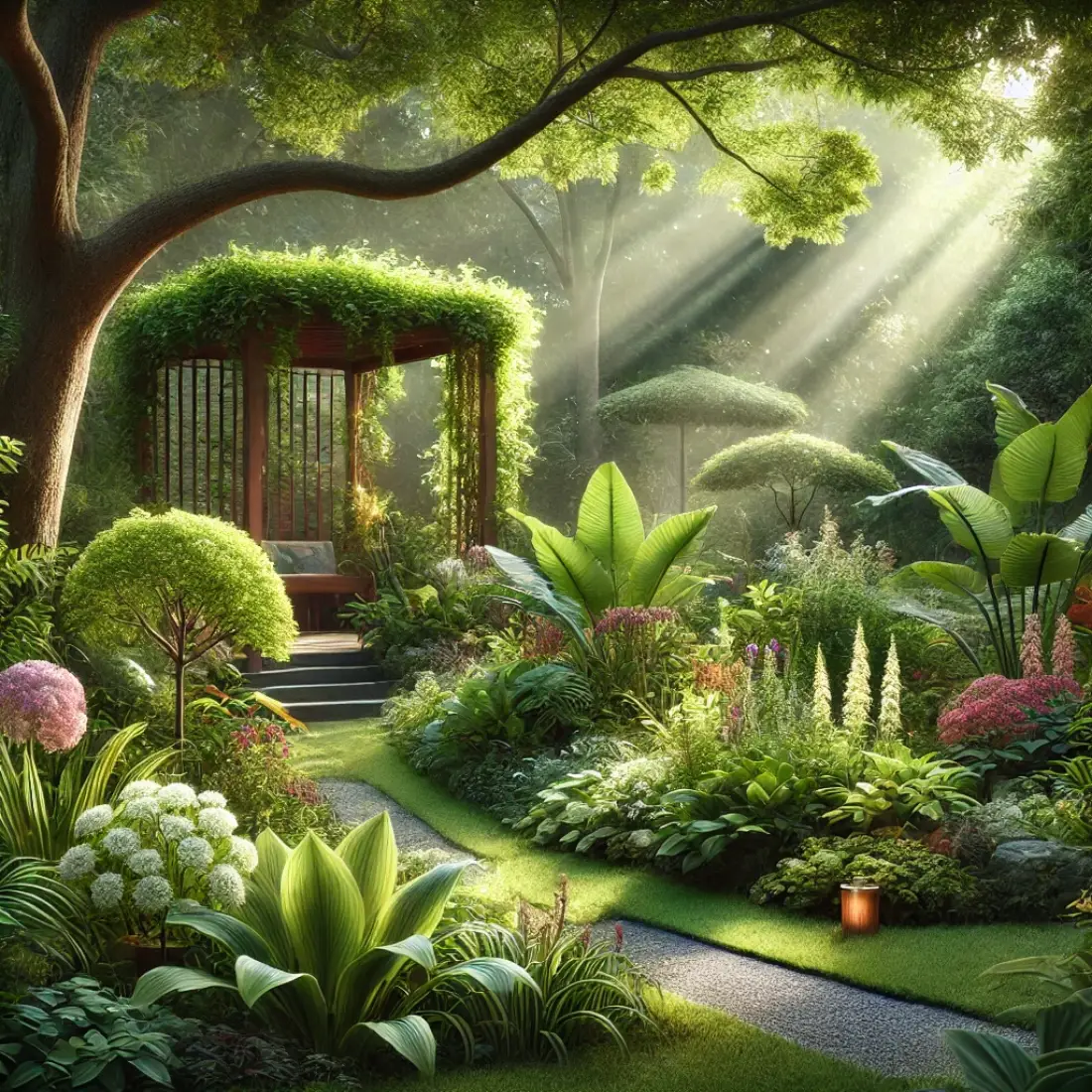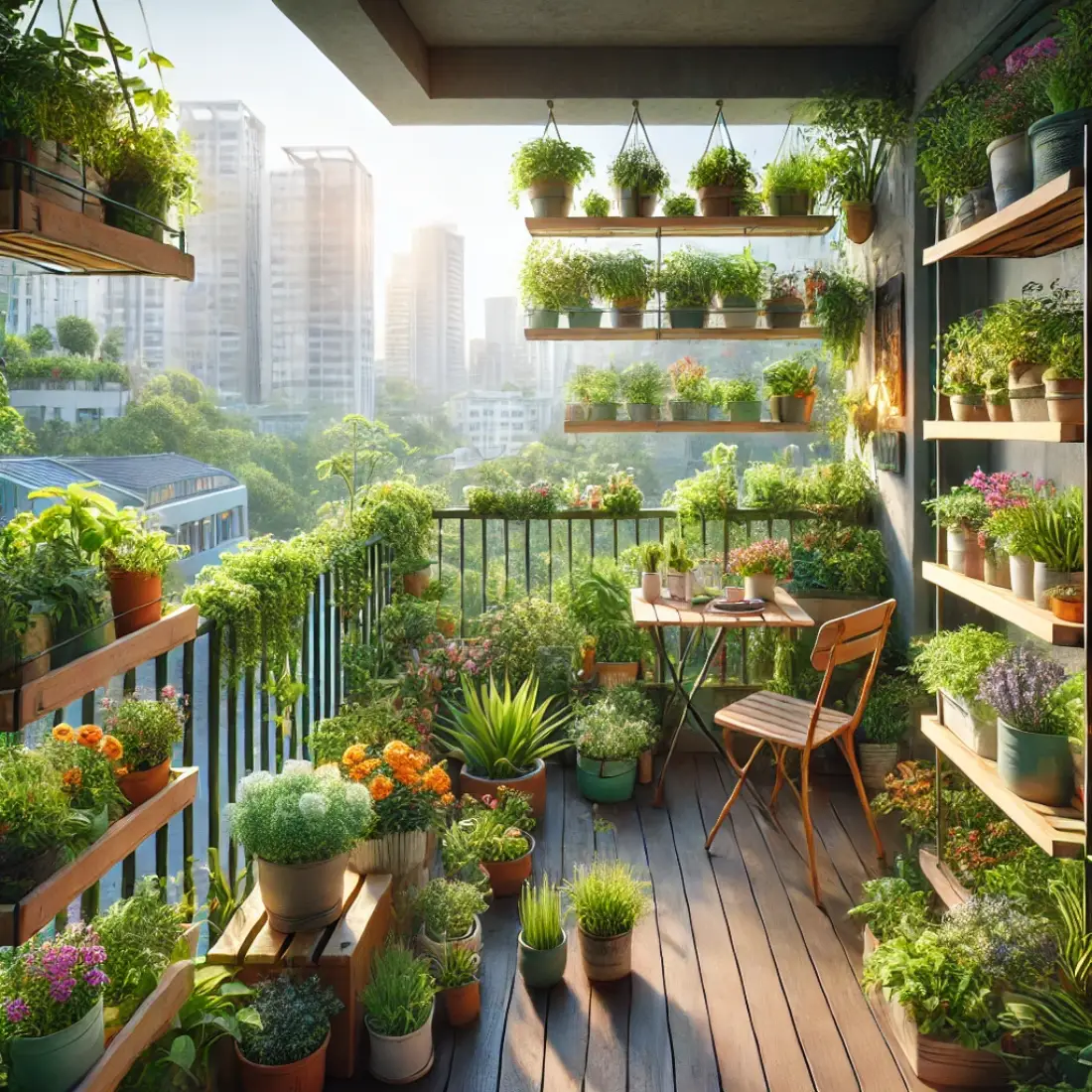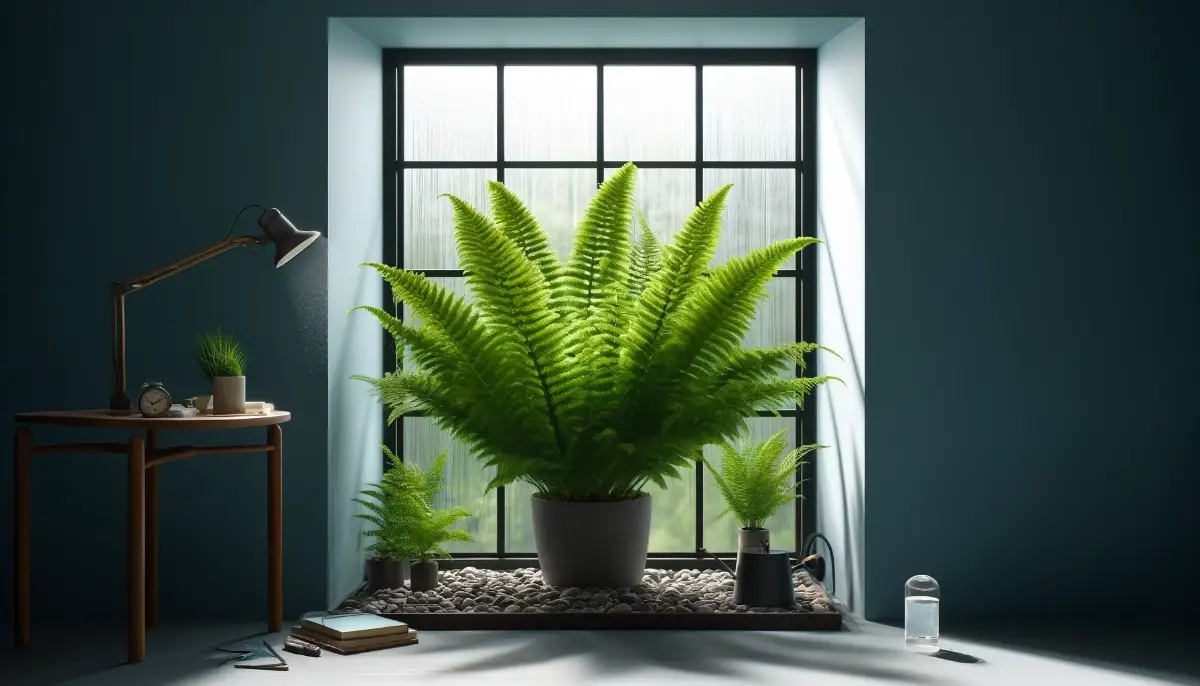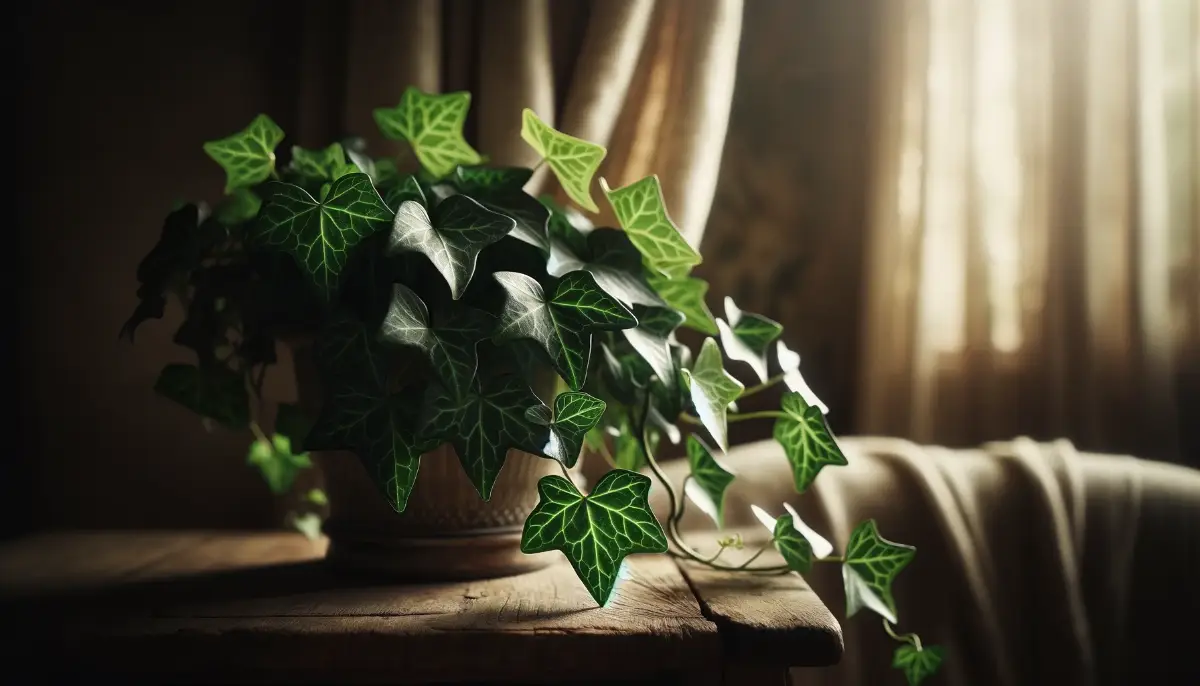Shade-loving plants are essential for creating vibrant gardens in areas with limited sunlight. These plants thrive in low-light conditions, transforming shaded spots into lush, green havens.
From lush foliage to delicate blooms, shade-tolerant plants offer variety in color, texture, and form, making them perfect for brightening up darker areas of your garden. Whether you’re dealing with a densely shaded space or partial shade, selecting the right plants ensures that your garden flourishes.
- Shade-loving plants thrive in low-light conditions, making them ideal for gardens with limited sunlight.
- These plants offer a diverse range of colors, textures, and heights, enhancing the beauty of shaded areas.
- Understanding the specific care needs, such as soil preferences and watering requirements, ensures that shade-tolerant plants remain healthy and vibrant.
- Incorporating a variety of shade-loving plants can create a lush and dynamic garden, even in the darkest corners.
- Maintenance is typically low, making these plants an excellent choice for gardeners seeking a beautiful, low-maintenance landscape.
Top 10 Shade-Loving Plants
These plants offer a perfect solution for those tricky, low-light areas of your garden. Each of these plants not only tolerates shade but also brings unique benefits, from vibrant foliage to stunning blooms.
Hostas and Ferns provide lush, green coverage, ideal for filling out shaded spaces. Astilbes and Heucheras add a pop of color with their striking flowers and foliage. Bleeding Hearts and Toad Lilies offer delicate, ornamental beauty, while Japanese Forest Grass and Brunnera bring texture and movement. Lungwort and English Ivy round out the list with their versatility and year-round interest.
1. Hostas

Hostas are a popular choice for shade gardens, known for their lush, broad leaves and variety of sizes. They thrive in partial to full shade, making them perfect for filling out darker areas of your garden. With a wide range of colors—from deep green to vibrant gold and even blue—Hostas add visual interest and texture.
These hardy perennials are low-maintenance, requiring only regular watering and well-drained soil. Their foliage creates a stunning backdrop for other plants, and they produce delicate, lavender or white flowers in the summer, adding an extra touch of beauty.
2. Ferns
Ferns are classic shade-loving plants, celebrated for their delicate, feathery fronds that add a soft, textured look to any garden. Thriving in partial to full shade, ferns are ideal for areas with moist, well-drained soil. They come in a variety of species, such as Boston Fern and Maidenhair Fern, each offering unique leaf patterns and growth habits.
Ferns require minimal maintenance and are perfect for creating a lush, green ground cover in shaded spots. Their ability to thrive in low light and high humidity makes them a versatile and enduring choice for shade gardens.
3. Astilbes
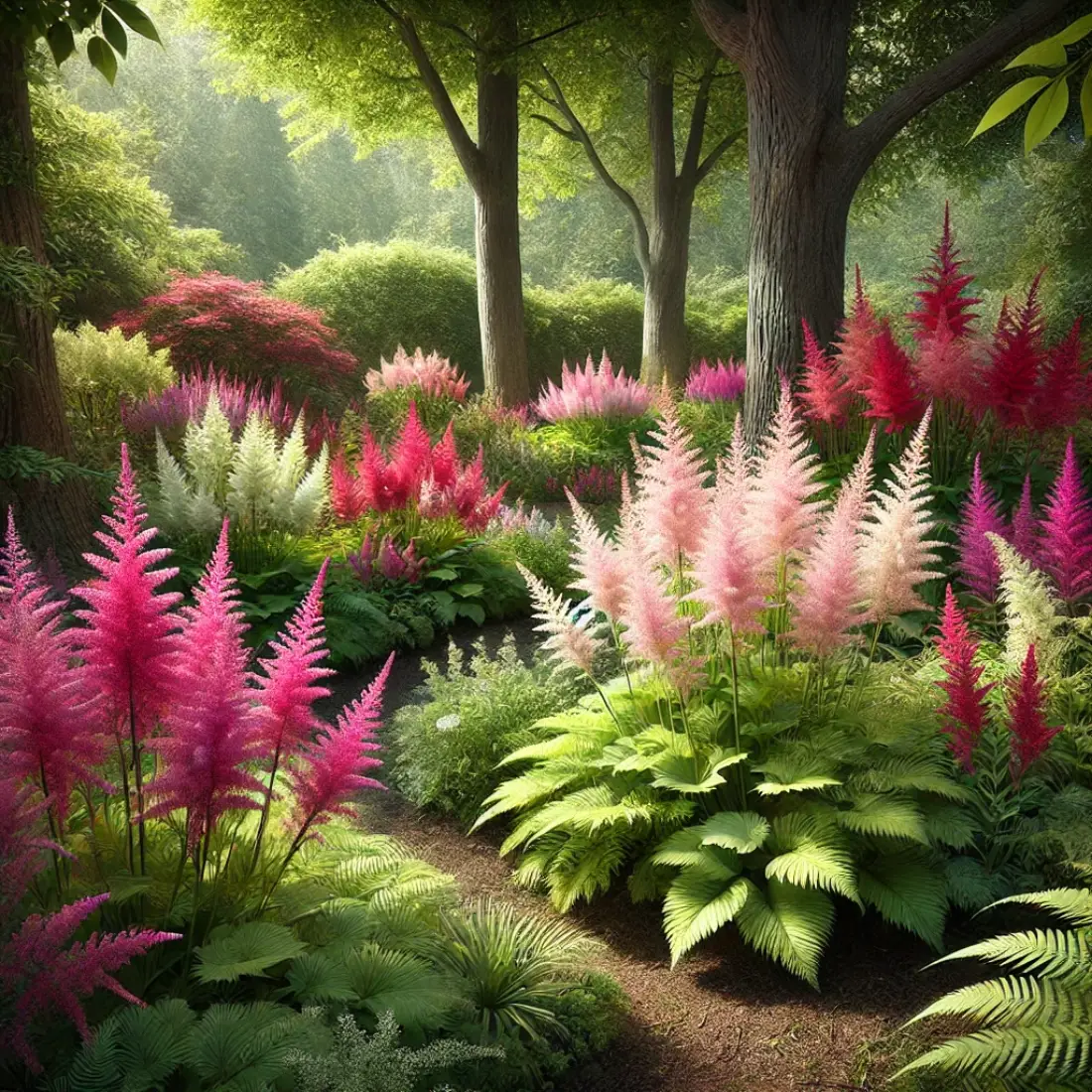
Astilbes are vibrant, shade-loving perennials known for their striking, feathery plumes of flowers that bloom in shades of pink, red, white, and purple. These plants thrive in partial to full shade, preferring moist, well-drained soil. Astilbes add a splash of color and vertical interest to shaded garden areas, with their tall, graceful flower spikes standing out against lush, fern-like foliage.
They are low-maintenance and deer-resistant, making them an excellent choice for gardeners seeking long-lasting blooms in darker spots. Astilbes also attract pollinators like bees and butterflies, adding life to your shaded garden.
4. Heucheras
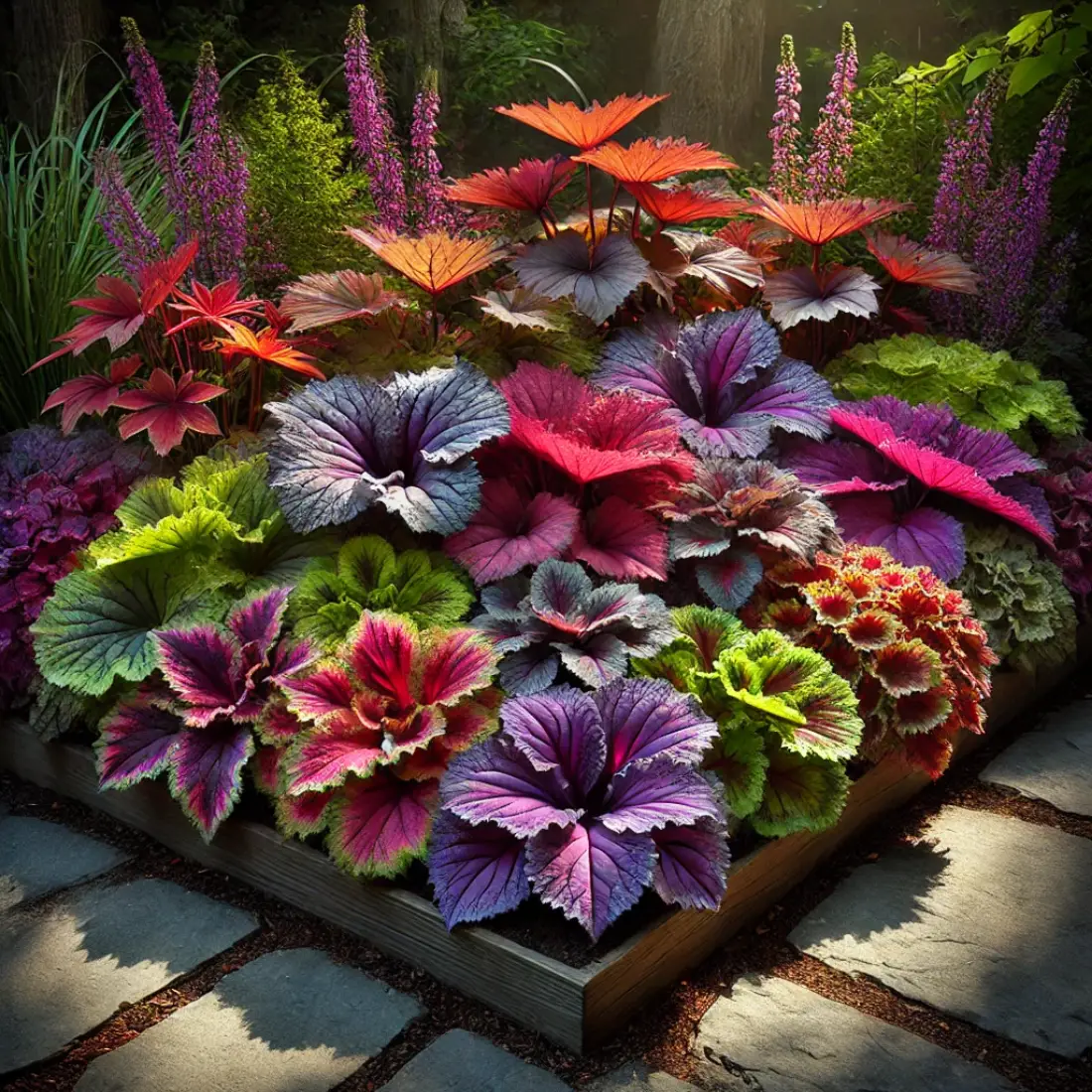
Heucheras, also known as Coral Bells, are shade-loving perennials prized for their vibrant, colorful foliage. Their leaves come in a wide range of colors, from deep purples and reds to bright greens and silvers, adding year-round interest to shaded gardens. Heucheras thrive in partial shade and well-drained soil, making them versatile and easy to care for.
In late spring to early summer, they produce delicate, bell-shaped flowers on tall, slender stems, attracting pollinators like hummingbirds. Their compact size and striking foliage make Heucheras ideal for borders, containers, and ground covers in shaded areas.
5. Bleeding Heart (Dicentra)
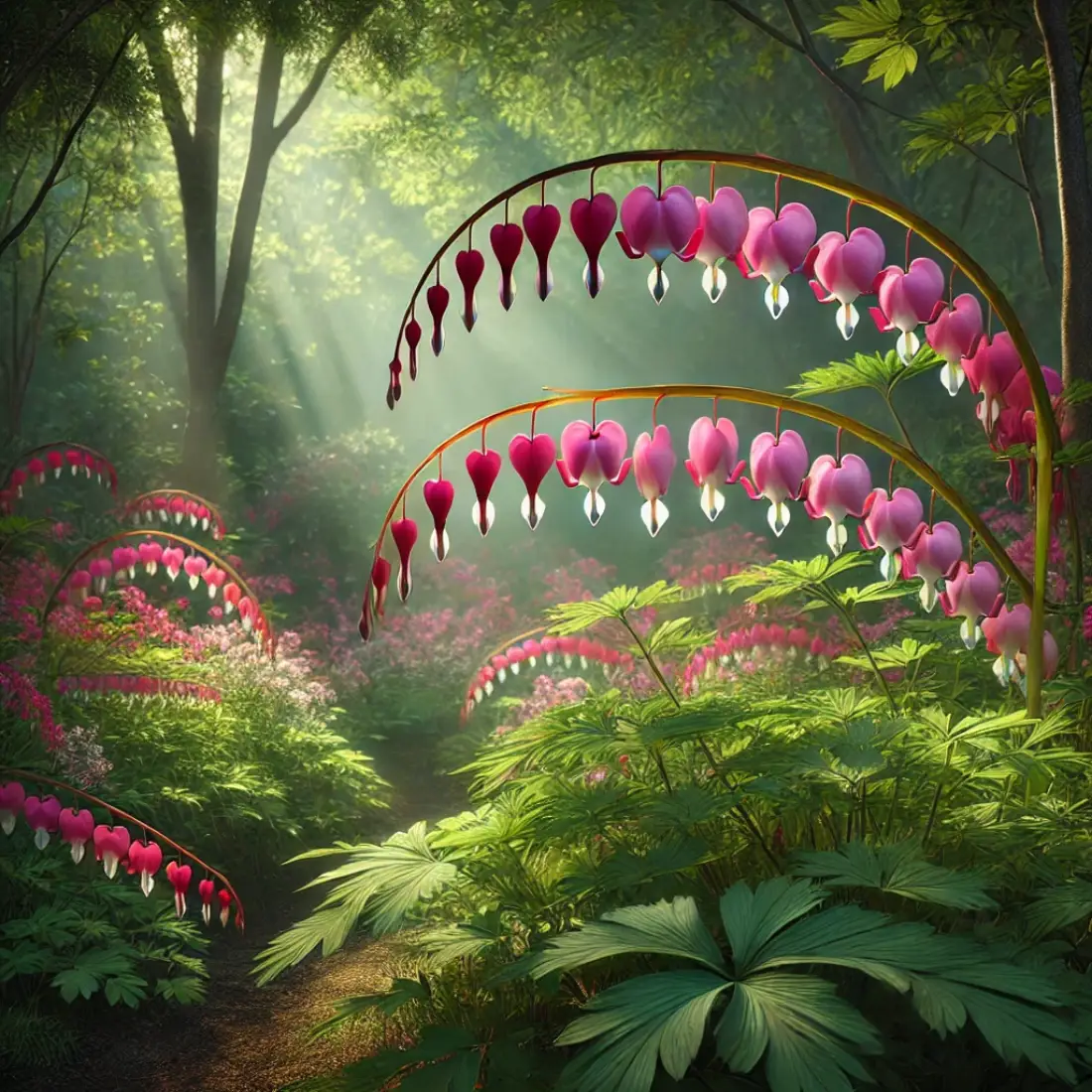
Bleeding Heart (Dicentra) is a charming shade-loving plant known for its distinctive, heart-shaped flowers that dangle gracefully from arching stems. Typically blooming in shades of pink, white, or red, these delicate flowers add a romantic touch to shaded garden areas. Bleeding Hearts thrive in partial to full shade, preferring moist, well-drained soil.
Their lush, fern-like foliage complements their elegant blooms, creating a stunning display in spring and early summer. Though the foliage may die back in mid-summer, the plant returns each year, making it a low-maintenance and enchanting addition to any shade garden.
6. Japanese Forest Grass (Hakonechloa)
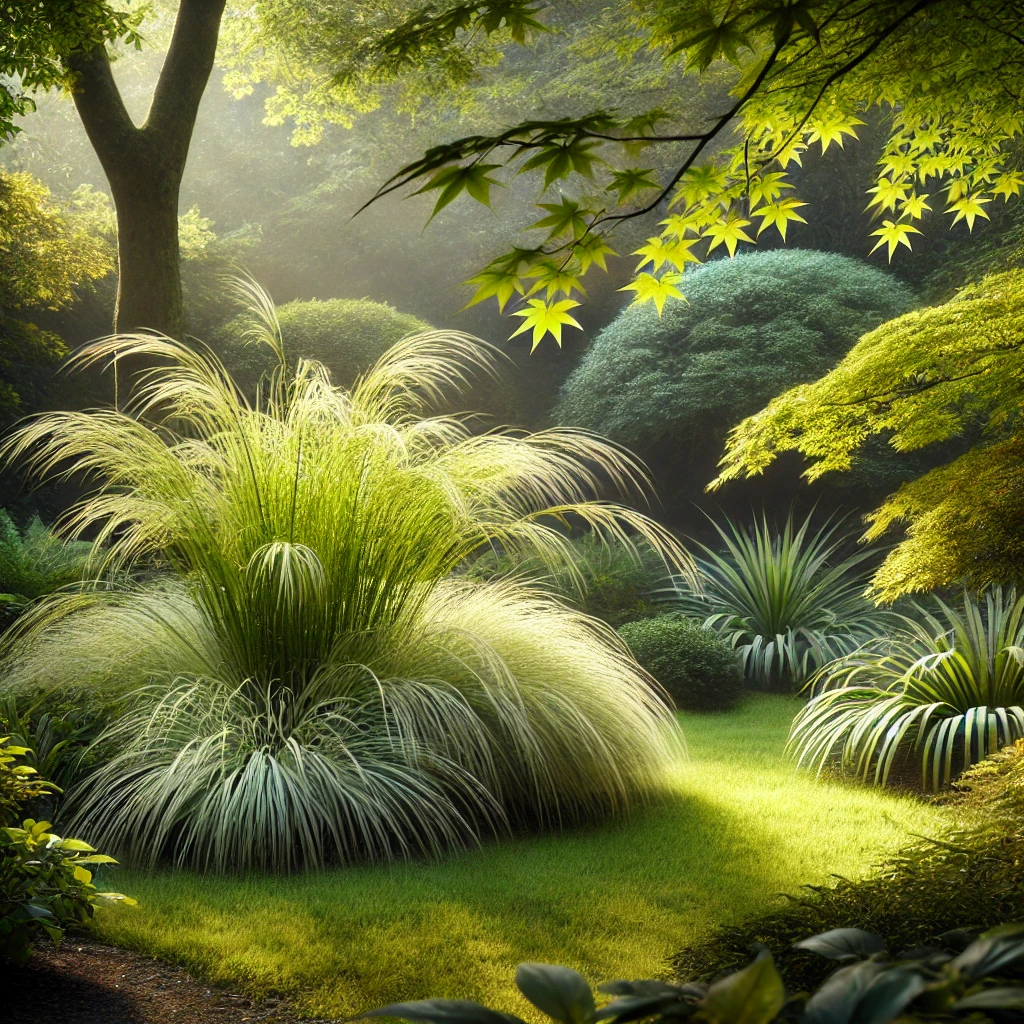
Japanese Forest Grass (Hakonechloa) is a graceful, shade-loving ornamental grass that adds texture and movement to shaded garden areas. Known for its cascading, bamboo-like leaves, it thrives in partial to full shade, preferring moist, well-drained soil. The foliage varies in color, with popular varieties displaying shades of bright green, gold, or variegated patterns.
Japanese Forest Grass is perfect for creating soft, flowing edges along pathways, borders, or as a ground cover. Its arching leaves sway gently in the breeze, bringing a sense of calm and elegance to shaded spots, while requiring minimal maintenance.
7. Brunnera
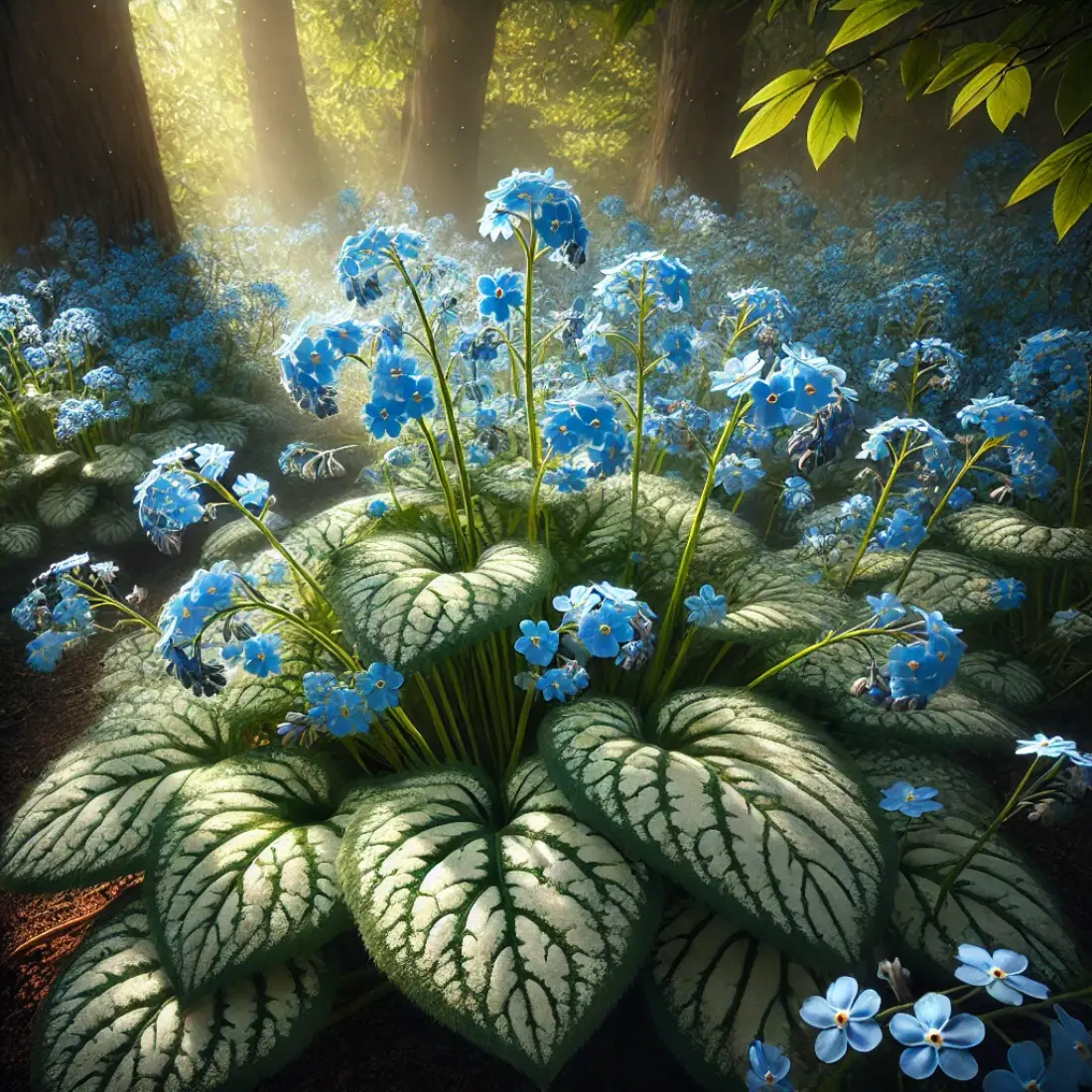
Brunnera, often called False Forget-Me-Not, is a shade-loving perennial known for its heart-shaped leaves and delicate, sky-blue flowers. Thriving in partial to full shade, Brunnera prefers moist, well-drained soil. The foliage, often variegated with silver markings, adds a striking contrast in shaded areas, while the small, bright blue flowers bloom in early spring, resembling those of forget-me-nots.
Brunnera is low-maintenance and deer-resistant, making it an excellent choice for borders, ground covers, and woodland gardens. Its combination of attractive leaves and charming blooms makes Brunnera a standout in any shaded garden setting.
8. Lungwort (Pulmonaria)
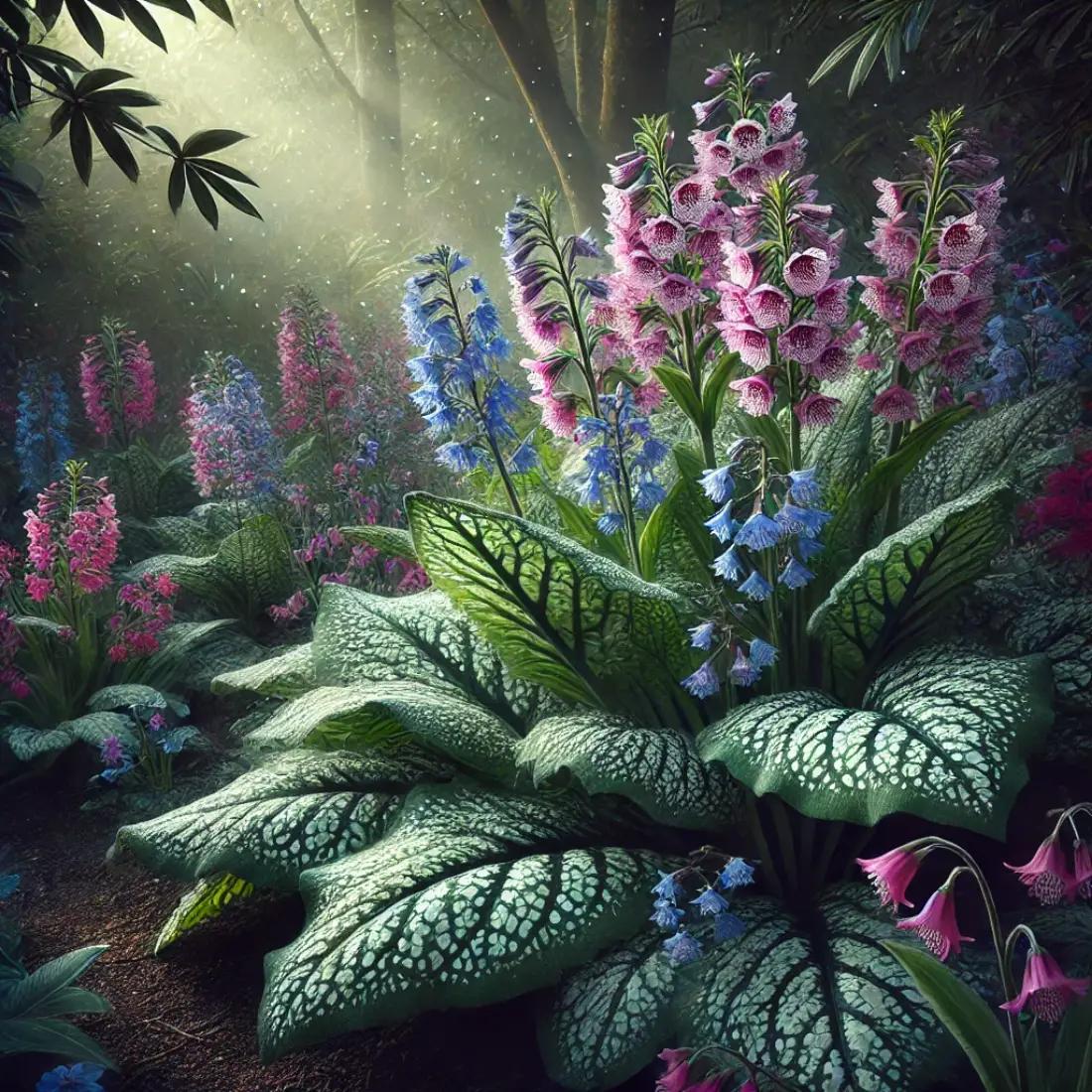
Lungwort (Pulmonaria) is a versatile, shade-loving perennial known for its distinctive, spotted foliage and early spring flowers. The leaves, often marked with silver or white spots, provide year-round interest, while the flowers bloom in shades of pink, blue, or purple, often changing color as they mature.
Lungwort thrives in partial to full shade, preferring moist, well-drained soil. It’s an excellent ground cover for shaded areas, adding texture and color when few other plants are in bloom. Lungwort is also deer-resistant and attracts pollinators, making it a valuable addition to any shade garden.
9. Toad Lily (Tricyrtis)
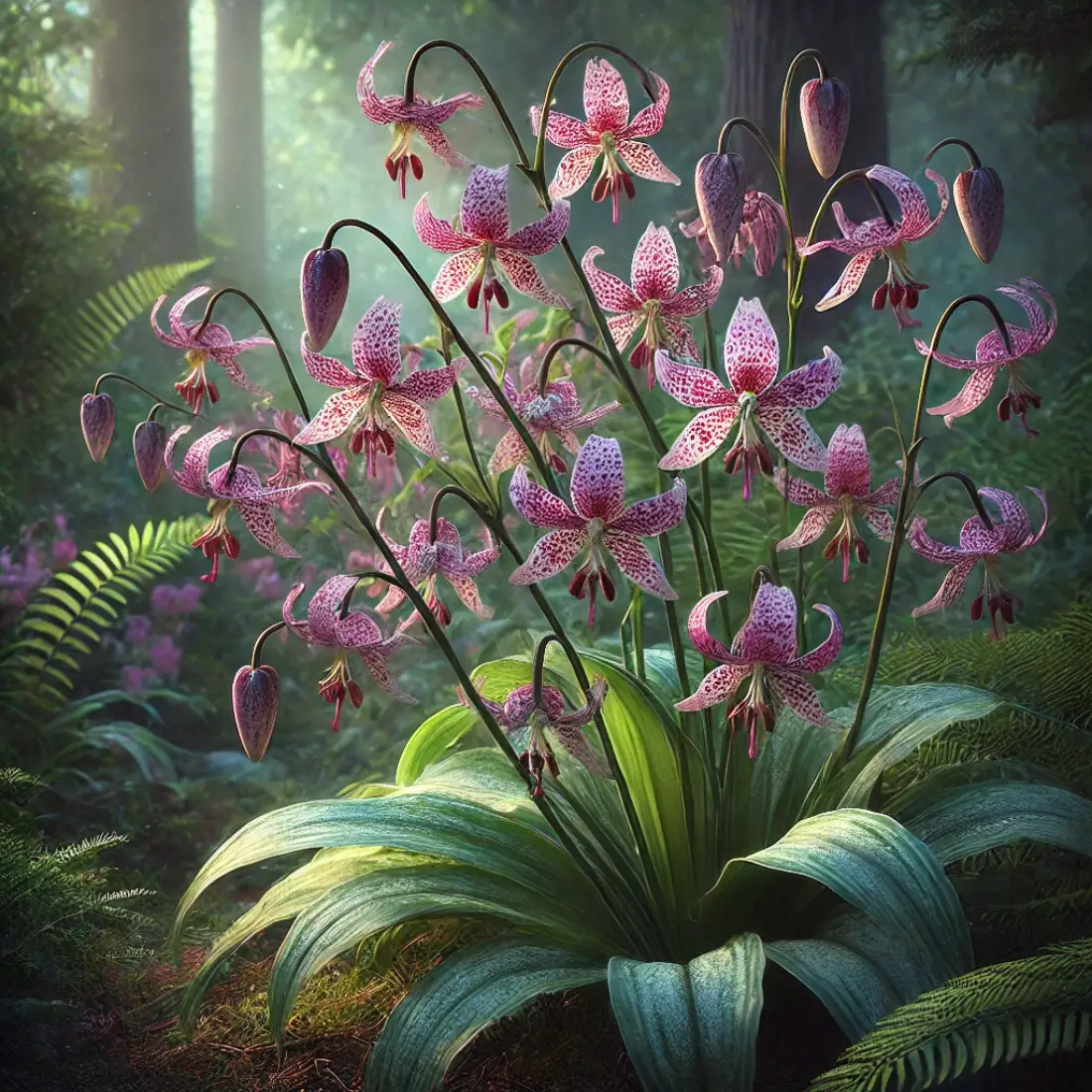
Toad Lily (Tricyrtis) is a unique shade-loving perennial known for its exotic, orchid-like flowers that bloom in late summer to fall. These delicate flowers, often speckled with purple, pink, or white, appear on arching stems, bringing unexpected beauty to shaded garden areas. Toad Lilies thrive in partial to full shade, preferring moist, well-drained soil.
Their compact growth and striking blooms make them perfect for borders, woodland gardens, or as understory plants. Toad Lilies are low-maintenance and deer-resistant, adding a touch of elegance and intrigue to gardens during a time when many other plants have finished blooming.
10. English Ivy
English Ivy (Hedera helix) is a hardy, evergreen vine that thrives in shade, making it ideal for covering walls, fences, or as ground cover in low-light areas. Its dense, dark green leaves create a lush, verdant backdrop year-round. English Ivy is highly adaptable, tolerating a variety of soil types and growing conditions, and requires minimal maintenance.
It’s excellent for erosion control on slopes and can quickly fill in shaded areas where other plants might struggle. However, it’s important to manage its growth, as it can become invasive if not regularly trimmed and controlled.
FAQs About Top Shade-Loving Plants
What are the best plants for deep shade?
Some of the best plants for deep shade include Hostas, Ferns, English Ivy, and Lungwort. These plants thrive with little to no direct sunlight, making them ideal for the darkest corners of your garden.
How often should I water shade-loving plants?
Shade-loving plants generally prefer consistently moist soil, but they should not be waterlogged. Water them regularly, especially during dry periods, but ensure the soil drains well to prevent root rot.
Can shade-loving plants tolerate some sun?
Yes, many shade-loving plants like Astilbes and Heucheras can tolerate some morning or late afternoon sun. However, they generally prefer partial to full shade, especially in hot climates.
What type of soil is best for shade-loving plants?
Most shade-loving plants prefer moist, well-drained soil rich in organic matter. Adding compost or mulch can improve soil quality and help retain moisture, which is beneficial for these plants.
Do shade plants require fertilization?
Shade-loving plants benefit from light fertilization in the spring to support growth and blooming. A balanced, organic fertilizer or organic compost is usually sufficient.
How can I prevent pests and diseases in shade-loving plants?
Keep the garden area clean, avoid overwatering, and ensure good air circulation to prevent fungal diseases. Regularly inspect plants for pests like slugs and snails, which are common in shaded areas, and use natural or chemical remedies as needed.
Are there flowering plants that thrive in shade?
Yes, flowering plants like Bleeding Hearts, Astilbes, Toad Lilies, and Brunnera thrive in shade and can brighten up shaded areas with their colorful blooms.
Can shade-loving plants be grown in containers?
Absolutely! Many shade-loving plants, such as Heucheras, Hostas, and Japanese Forest Grass, do well in containers. Just ensure the pots have good drainage and are placed in a shady spot.
How do I manage English Ivy’s growth in my garden?
English Ivy can be vigorous and invasive, so it’s important to trim it regularly to keep it under control. Avoid planting it near trees or structures where it can climb and cause damage.
Can I combine different shade-loving plants in one garden bed?
Yes, combining different shade-loving plants can create a diverse and visually appealing garden. Mix plants with different foliage colors, textures, and heights, such as Ferns, Heucheras, and Lungwort, for a dynamic landscape.

